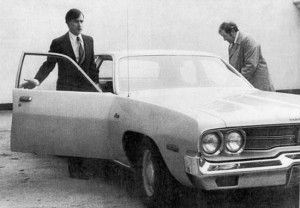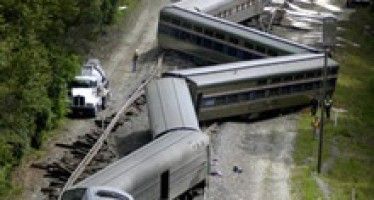Crazifornia: Dramatic car fleet cuts aren’t dramatic enough
By Laer Pearce
Gov. Jerry Brown didn’t cut any beat up old Plymouths from the state’s car fleet this Tuesday, but that enduring symbol of his Moonbeam years aside, he did give the fleet a bit of a trim, issuing an executive order requiring the state to dump 7,112 vehicles.
Will that include the 50 Toyota Priuses the California Department of General Services bought in 2009, then left on the roof of a parking garage for eight months? Or the 51 vans the California Highway Patrol purchased, then let collect dust in lots for two years as Californians paid out $90,385 in interest payments on them? Probably not, although in a press release, Brown did acknowledge that a lot of the cars to be cut “aren’t even driven.”
The Department of Corrections & Rehabilitation’s fleet got the biggest whack, as 2,263 vehicles will be pared from its fleet. If you’re wondering how big the Dept. of Corrections’ fleet had to be if the state could so easily eliminate 2,263 vehicles from it, the answer is 8,940. Post-reduction, the department is left with a mere 6,677 vehicles for the members of California’s powerful prison guards union to tootle around in as they count down the days until the start of their lucrative retirements.
44,000 cars remain
According to information provided to me by the Department of General Services (which must cut 823 vehicles from its fleet), 44,000 state-owned cars will remain after the purge. While that sounds like a very large fleet for a state to maintain at taxpayer expense, you have to be careful with California statistics because this is one very large state. We have more school kids than Virginia has people, for example, and only five states have more registered vehicles than Los Angeles County alone does. So, to be fair, you need to compare the number of state employees per car state by state before jumping to conclusions.
Well, go ahead and jump. It turns out that California does have a very large car fleet, even after the cuts. Once the state dumps the 7,112 cars, it will be left with about one car for every five state employees. (The state counted 223,370 active employees in July.) In Illinois, a state that rivals California in government mismanagement, there is only one state car for every 6.6 state employees — about the same as Arkansas. And in Pennsylvania, no slouch when it comes to government excess, there is only one state car for every 8.5 state employees.
Still too many cars
So — and this should come as no surprise to anyone — California had way too many cars in its fleet before the cut, and will have way too many cars in its fleet after the cut is in place.
This close look at the fleet-trimming story shows it to be much like this week’s larger California budget story: the proposal to trim public employee retirement benefits. A quick crunch of the numbers by Sacramento analysts showed the proposed changes could bring as much as $40 to $60 billion in lower pension costs. But with the pension deficit anywhere from $250 billion to a more likely $500 billion, like the car cuts, the pension cuts are just not enough.
California may be at or near the bottom of a lot of state-to-state comparisons — worst for business, worst legal environment, 46th in elementary school math scores, 48th in reading and 49th in science — but it continues to score near the top in not doing enough to get its budget deficits under control.
Laer Pearce is an occasional contributor to CalWatchdog.com. He works in California public affairs and is the author of Crazifornia, Tales from the Tarnished State, which will be available in September.
Related Articles
LAT’s Vartabedian, Skelton leave LAT editorial board looking silly
When it comes to the bullet train, The Los Angeles Times’ editorial page has been left to look foolish —
Funds for Moonbeam's sick buildings
SEPT. 2, 2010 By WAYNE LUSVARDI California newspaper editorials cry out that it is “outrageous” and “unacceptable” that almost a
Life expectancy gains: new front in CA pension funding woes
Daniel Borenstein of the Bay Area Newspaper Group had a sharp column Sunday pointing out that delays in acknowledging gains




